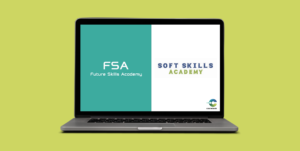Blog
Trends in Online Education in 2024

The landscape of education has undergone a remarkable transformation in recent years, and this evolution is set to continue as we head into 2024. Online education has seen unprecedented growth, with technology playing a pivotal role in reshaping how we learn. As we look ahead to 2024, there are several trends in online education that are likely to shape the future of learning. Here are some of the most important trends to watch:
- The Role of AI and ML: One of the top trends presently in online education is the use of AI, and according to Global Market Insights, the role of AI in education will reach $6 billion by 2024 (Rishabh Prasad, 2023). The widespread implementation of AI through software and educational apps offers us three key advantages, i.e., quick, innovative, and less expensive learning through technology usage. Artificial Intelligence (AI) and Machine Learning (ML) are becoming increasingly important in online education. AI and ML can be used to personalize learning experiences, provide real-time feedback, and automate administrative tasks. For example, AI-powered chatbots can provide students with instant support and answer their questions 24/7. Another example is the use of adaptive learning software, which adjusts the difficulty of the material based on the student’s performance. This can help students learn at their own pace and ensure that they have a deep understanding of the material before moving on to the next topic.
- Hybrid Education: Hybrid education is a term that refers to a combination of online and in-person learning. This trend has been growing in popularity since the pandemic, and it is likely to continue in the future (Acer for Education, 2023). Hybrid education allows students to access education from anywhere while maintaining social interaction and personalized support. For example, a student might attend lectures online and then come to campus for hands-on activities or group projects. Hybrid education can also be used to provide students with more flexibility in their schedules, allowing them to balance work and family commitments with their studies.
- Personalized Learning: Personalized learning is a trend that has been gaining traction in recent years. This approach to learning involves tailoring education to the individual needs and interests of each student (Sonal Mishra, 2023). Personalized learning can be achieved using technology, such as adaptive learning software, which adjusts the difficulty of the material based on the student’s performance and can assists educators identify areas where students are struggling and provide targeted support.
- Competency-Based Education: Competency-based education is an approach to learning that focuses on the mastery of specific skills and knowledge rather than the completion of a set curriculum (Mishra, 2023). This approach allows students to progress at their own pace and ensures that they have a deep understanding of the material before moving on to the next topic. For example, a student might be required to demonstrate their mastery of a particular skill before moving on to the next level of the course.
- STEM and STEAM Education: STEM (Science, Technology, Engineering, and Mathematics) and STEAM (Science, Technology, Engineering, Arts, and Mathematics) education are both growing in popularity (Mishra, 2023). These approaches to learning focus on developing skills in these areas, which are in high demand in today’s job market. For example, a student might take a course in coding or robotics to develop their skills in these areas.
- Immersive Tech: Immersive technologies such as virtual reality (VR) and augmented reality (AR) are becoming increasingly popular in education (Acer for Education, 2023). These technologies allow students to experience learning in a more engaging and interactive way, which can improve retention and understanding of the material. For example, a student might use VR to explore a historical site or a scientific concept in a more immersive way.
- Social-Emotional Learning: Social-emotional learning (SEL) is a trend that focuses on developing students’ emotional intelligence and social skills (Mishra, 2023). This approach to learning recognizes that students’ emotional well-being is essential to their academic success. For example, a student might take a course in mindfulness or emotional regulation to develop their social-emotional skills.
- Collaborative Learning: Collaborative learning is a trend that involves students working together in groups to solve problems and complete projects (Andrea Cozart-Lundin, 2023). This approach to learning can improve students’ communication and teamwork skills, which are essential in today’s workplace. For example, a student might work on a group project to develop a new product or service, using their skills in collaboration and problem-solving to achieve their goals.
In conclusion, the future of online education looks bright, with many exciting trends on the horizon. From the use of AI and ML to personalized learning and immersive tech, these trends are likely to shape the future of learning in the years to come. As an instructional designer and online course content writer, it is essential to stay up-to-date with these trends to create engaging and effective learning experiences for your students.
References:
- Prasad, Rishabh (2023), TOP 5 ONLINE EDUCATION TRENDS –2024, Moonpreneur, date accessed: September 28, 2023. https://moonpreneur.com/blog/online-education-trends-2024/
- 5 EdTech Trends for 2024 (2023), Acer for Education, date accessed: September 28, 2023. https://acerforeducation.acer.com/education-trends/edtech-trends-2024/
- Mishra, Sonal (2023), TOP 8 EDUCATION TRENDS IN 2024: A GLIMPSE INTO THE FUTURE, Moonpreneur, date accessed: September 28, 2023. https://moonpreneur.com/blog/education-trends-in-2024/
- Cozart-Lundin, Andrea (2023), Top eLearning Trends for 2024: Instructional Design Trends to Watch, Elearnitall, date accessed: September 28, 2023. https://blog.elearnitall.com/eLearning-Trends
By Rosh Chrisean Castro
Coursebank Content Writer and Instructional Designer




